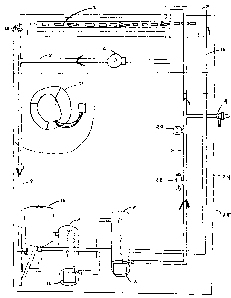Some of the information on this Web page has been provided by external sources. The Government of Canada is not responsible for the accuracy, reliability or currency of the information supplied by external sources. Users wishing to rely upon this information should consult directly with the source of the information. Content provided by external sources is not subject to official languages, privacy and accessibility requirements.
Any discrepancies in the text and image of the Claims and Abstract are due to differing posting times. Text of the Claims and Abstract are posted:
| (12) Patent Application: | (11) CA 2458248 |
|---|---|
| (54) English Title: | HEATING SYSTEM |
| (54) French Title: | SYSTEME DE CHAUFFAGE |
| Status: | Deemed Abandoned and Beyond the Period of Reinstatement - Pending Response to Notice of Disregarded Communication |
| (51) International Patent Classification (IPC): |
|
|---|---|
| (72) Inventors : |
|
| (73) Owners : |
|
| (71) Applicants : |
|
| (74) Agent: | ROBERT WILLIAM WRAYWRAY, ROBERT WILLIAM |
| (74) Associate agent: | |
| (45) Issued: | |
| (22) Filed Date: | 2004-02-18 |
| (41) Open to Public Inspection: | 2005-08-18 |
| Availability of licence: | N/A |
| Dedicated to the Public: | N/A |
| (25) Language of filing: | English |
| Patent Cooperation Treaty (PCT): | No |
|---|
| (30) Application Priority Data: | None |
|---|
The present invention involves a radiator/hot water heating system (electric)
within a traditional
forced-air furnace housing, which is connected to the existing central air
ductwork of a building.
The radiator/hot water heating system uses a single radiator which is
connected to one or more
4" pipes through which water is heated by means of electricity. The entire
heating system
contains approximately 3 gallons of water. A fan circulates heat from the
radiator through-out the
building.
Note: Claims are shown in the official language in which they were submitted.
Note: Descriptions are shown in the official language in which they were submitted.

2024-08-01:As part of the Next Generation Patents (NGP) transition, the Canadian Patents Database (CPD) now contains a more detailed Event History, which replicates the Event Log of our new back-office solution.
Please note that "Inactive:" events refers to events no longer in use in our new back-office solution.
For a clearer understanding of the status of the application/patent presented on this page, the site Disclaimer , as well as the definitions for Patent , Event History , Maintenance Fee and Payment History should be consulted.
| Description | Date |
|---|---|
| Inactive: IPC expired | 2022-01-01 |
| Inactive: IPC expired | 2022-01-01 |
| Inactive: Office letter | 2007-03-14 |
| Application Not Reinstated by Deadline | 2007-02-19 |
| Time Limit for Reversal Expired | 2007-02-19 |
| Letter Sent | 2006-06-21 |
| Letter Sent | 2006-06-21 |
| Reinstatement Requirements Deemed Compliant for All Abandonment Reasons | 2006-05-23 |
| Inactive: Transfer reinstatement | 2006-05-23 |
| Inactive: IPC from MCD | 2006-03-12 |
| Inactive: IPC from MCD | 2006-03-12 |
| Deemed Abandoned - Failure to Respond to Maintenance Fee Notice | 2006-02-20 |
| Application Published (Open to Public Inspection) | 2005-08-18 |
| Inactive: Cover page published | 2005-08-17 |
| Inactive: Status info is complete as of Log entry date | 2005-07-08 |
| Inactive: Abandoned - No reply to Office letter | 2005-05-24 |
| Inactive: IPC assigned | 2004-06-07 |
| Inactive: First IPC assigned | 2004-06-04 |
| Inactive: IPC assigned | 2004-06-04 |
| Amendment Received - Voluntary Amendment | 2004-05-20 |
| Inactive: Filing certificate - No RFE (English) | 2004-03-24 |
| Inactive: Courtesy letter - Evidence | 2004-03-24 |
| Application Received - Regular National | 2004-03-24 |
| Abandonment Date | Reason | Reinstatement Date |
|---|---|---|
| 2006-02-20 |
| Fee Type | Anniversary Year | Due Date | Paid Date |
|---|---|---|---|
| Application fee - small | 2004-02-18 | ||
| Registration of a document | 2006-05-23 | ||
| Reinstatement | 2006-05-23 | ||
| 2007-02-19 |
Note: Records showing the ownership history in alphabetical order.
| Current Owners on Record |
|---|
| JOCELYNE FOURNIER LACELLE |
| Past Owners on Record |
|---|
| JEAN-GUY LACELLE |